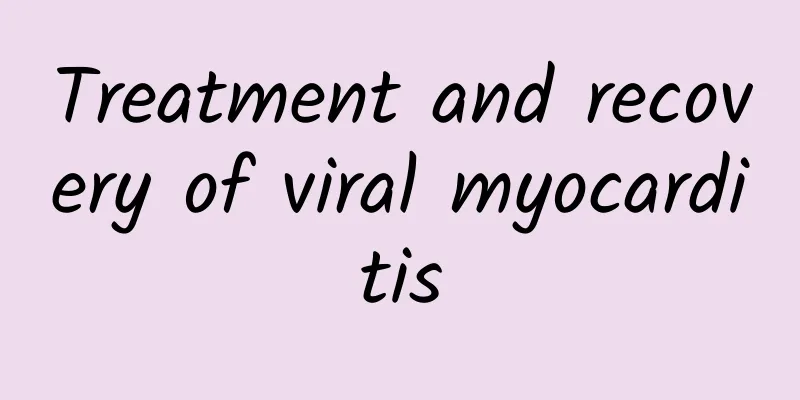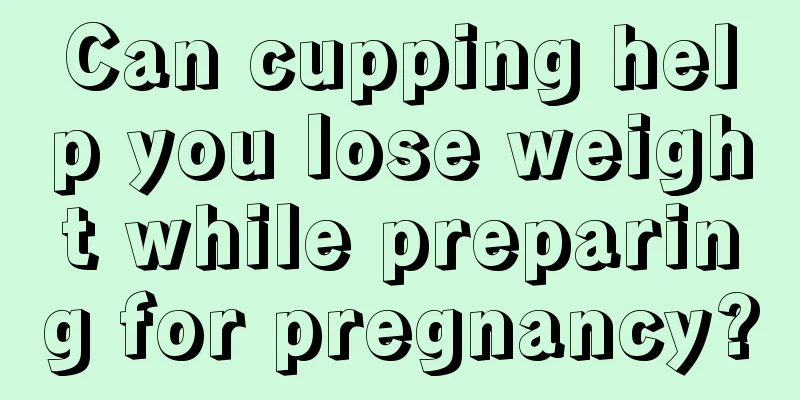Treatment and recovery of viral myocarditis

|
Author: Liu Wenxian, Chief Physician, Beijing Anzhen Hospital, Capital Medical University Reviewer: Wang Fang, Chief Physician, Beijing Hospital Viral myocarditis is actually a heart disease caused by a viral infection. It silently attacks the heart muscle, causing inflammation, which in turn affects heart function. In mild cases, the effect may be minor, but in severe cases, it may lead to fatal consequences. When facing viral myocarditis, correct treatment and adequate recovery are crucial. 1. How to treat viral myocarditis? The treatment of viral myocarditis is a comprehensive process involving multiple links. First of all, rest is the basis of treatment. Patients should rest in bed during the acute phase and avoid strenuous exercise and emotional excitement to reduce the burden on the heart and promote the repair of myocardial cells. Secondly, although there is currently no specific antiviral drug to treat viral myocarditis, in certain cases, doctors may consider using antiviral drugs to inhibit viral replication. However, the pros and cons of using antiviral drugs should be carefully weighed, because they are not effective for all patients and may bring certain side effects. For patients with complications, such as arrhythmia, heart failure, or cardiogenic shock, appropriate symptomatic treatment measures are required. These measures are aimed at relieving patient symptoms, improving quality of life, and creating conditions for the recovery of myocardial inflammation. In severe cases of heart failure or cardiogenic shock, patients may need mechanical assisted circulation to support life. Extracorporeal membrane oxygenation (ECMO) is a commonly used mechanical assisted circulation device that can effectively reduce the burden on the heart and help patients through the critical period. In the early days when ECMO was not available, IABP, or intra-aortic balloon pump, was also used to allow the heart to rest properly, allowing the damaged inflamed myocardium to recover on its own, and reducing the heart's load. Figure 1 Original copyright image, no permission to reprint Finally, during the treatment, doctors may use some auxiliary drugs to regulate the immune response and reduce the damage to myocardial cells. Commonly used immunomodulatory drugs include glucocorticoids, immunoglobulins, etc. These drugs can inhibit the excessive activation of the immune response and reduce the damage to myocardial cells. However, it should be noted that immunomodulatory drugs also have certain side effects and dependence, so the pros and cons should be carefully weighed when using them. 2. Rehabilitation and management of viral myocarditis The recovery process of viral myocarditis requires the joint efforts of patients and doctors. The recovery time after treatment of viral myocarditis varies from individual to individual, but in general, the clinical course takes about 10 days to basically relieve symptoms. However, the complete recovery of inflammation is a gradual process, not a sudden change at a specific time point. In the early stages of recovery, we recommend that patients take a longer rest in order to promote adequate repair of myocardial cells and recovery of heart function. Patients are usually advised to maintain strict rest and avoid any strenuous exercise and physical activity during the first month. After that, during the 3-6 month recovery period, physical activity is gradually increased, but excessive load should still be avoided to prevent heart enlargement and impaired heart function. For students and children, it is recommended to completely avoid physical activity during the first month and continue to avoid high-intensity physical activity for the next six months. This ensures that the heart has enough time to recover and avoids unnecessary strain on the heart. Figure 2 Original copyright image, no permission to reprint During the recovery process, patients need to go to the hospital for regular checkups and examinations to monitor changes in their condition and treatment effects. Doctors will develop a personalized monitoring plan based on the patient's specific situation, including electrocardiogram, cardiac ultrasound, myocardial enzyme spectrum and other examination items. These examination items can detect changes in the condition in a timely manner and provide an important basis for treatment. For patients with severe conditions or residual heart failure, long-term management is required. Doctors will develop personalized treatment plans based on the patient's specific conditions, including drug therapy, cardiac rehabilitation exercises, etc. At the same time, patients also need regular follow-up and examinations to monitor changes in their condition and adjust treatment plans. |
<<: Viral myocarditis: a latent heart "cold"
>>: High blood lipids ≠ greasy diet! So what is the trick?
Recommend
How does traditional Chinese medicine treat migraines? Which parts of the body should be acupunctured for migraines?
Sometimes we feel a throbbing pain on one or both...
What does it mean when you are pregnant and don't vomit?
It is normal not to vomit during pregnancy. The s...
Is the natural cream suitable for all skin types? How to solve the problem of natural cream being too dry
The main purpose of natural cream is to whiten th...
Is cervical erosion a disease? Do you want treatment?
In the past, cervical erosion has always been con...
For the baby's health, the doctor inserted a foot-long silver needle into my stomach
My husband and I were the first "dual-only f...
What is the safe period?
Maybe we all don’t know much about what the safe ...
How long does it take to drain the blood after cesarean section?
Generally speaking, if a woman chooses to have a ...
How long does it take to get menstruation after weaning?
After weaning, women usually need 3 to 6 months t...
What to do during pregnancy
During pregnancy, spotting is a relatively danger...
Simple method to remove melasma
Chloasma is a type of pigmentation that is common...
Is your Double 11 shopping cart ready to go? Want to take a look?
Double 11 is officially here tonight, are you rea...
The standard of top-hip length in three months of pregnancy
The fetal top-to-butt diameter is the length from...
How much do you know about cervical cancer prevention?
Cervical cancer is the most common gynecological ...
Aunt color light
Women's menstrual status is closely related t...
Reasons for the IUD to fall off
The IUD is a very common method of contraception....









